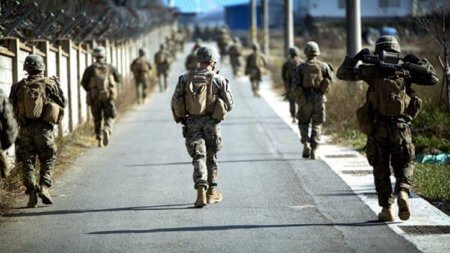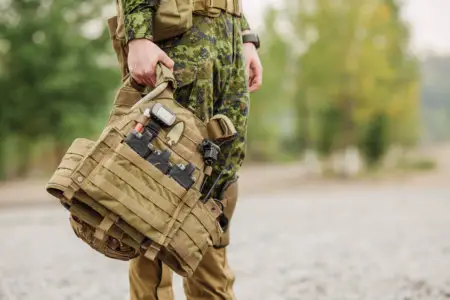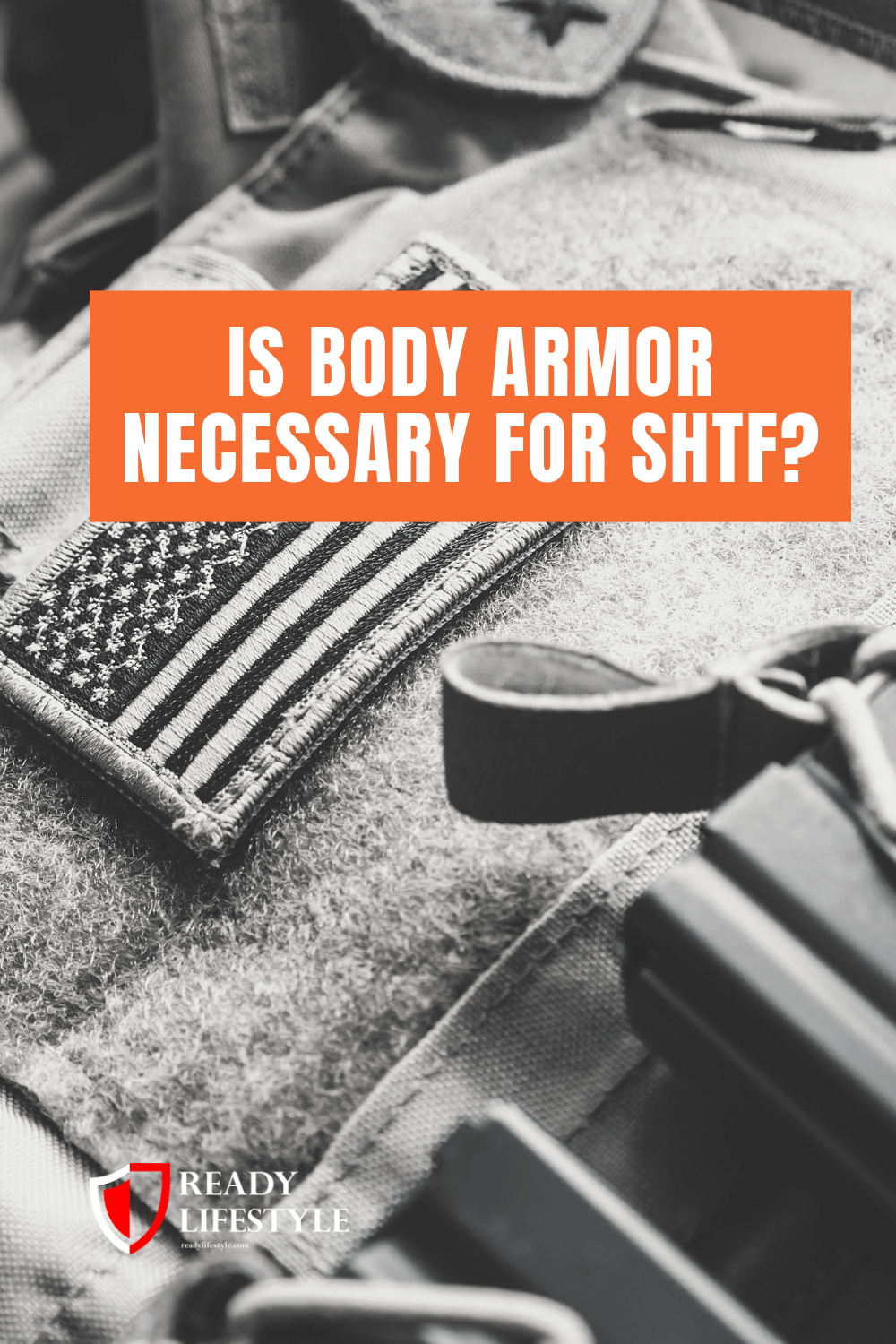Is Body Armor Necessary for SHTF?
It seems like I’ve been having discussions about body armor nearly every day lately. Today we’re going to talk about whether body armor is actually needed during SHTF.
Is body armor necessary for SHTF? Body armor is necessary for SHTF if you want to be ready for periods of enhanced violence and conflict. You probably won’t need it every day, but there will most likely be situations where you would want it.
Saying that you need body armor for SHTF may seem a little paranoid to some. Let’s look at it a little closer and see how I came to that conclusion.
[wc_toggle title=“Table of Contents” padding=“” border_width=“” class=“” layout=“box”]
[/wc_toggle]
Body Armor for SHTF
In my opinion, you absolutely need body armor during an SHTF event. You simply don’t know what may happen during those periods. When the world gets turned upside down people may remain civil, but if there’s a time that they begin to struggle to get enough food or water for their families, the chances that everyone remains civil is almost non-existent.
With the current availability of body armor to the civilian market, it makes almost no sense not to buy body armor. Unless you just absolutely can’t afford it, I highly suggest you put it on your list of things that you’ll eventually buy.
Is it more important than water, food, or a weapon to defend yourself? Absolutely not, but it’s still important in the grand scheme of things if you want to be able to defend yourself as best as you can.

Why Should you Own Body Armor?
Asking why you would need something is always a great place to start. It’s actually the first thing you should do whenever you’re trying to determine where you should prioritize a prepping purchase.
There’s only one reason that you’d need body armor, to stop bullets and in some cases a knife or stabbing attack. Other than that it doesn’t do anything besides weigh you down.
While everything is going good in the world, most of us will never have to worry about getting shot or stabbed. It’s when things start to fall apart that the likelihood of being in a gunfight of some kind starts to become a reality. It’s in these times that you’re probably going to want to at least have body armor available to you if you need it.
There are two groups of people that should have access to body armor after an SHTF. Those actively defending your community and family and (to a lesser degree) every able-bodied adult.
If there ever is a real societal collapse, keeping your family and your community safe is going to be one of your main concerns. The best way to do this is by having security set up around your community and through active patrolling in the area outside of your perimeter. You can’t defend yourself from your front door!
These are the people that will need body armor the most. If you think you may find yourself in that role then it only makes sense to be ready for it.
Every able-bodied adult should also be capable of defending their home and family. Normally that’s going to only happen at the last minute with no time to prepare but if you have advance warning that a threat is coming, it would be nice to have an extra layer of protection on.

Body Armor for Preppers
We already discussed why you’d want body armor. Even though preppers typically aren’t going to be running around in gunfights all day long, they could still get into some bad situations that would make body armor useful.
It seems like the main reason that preppers shy away from buying body armor is because the topic can seem a little overwhelming when you first start looking into it.
With so much bad information out there, I can completely understand why people would be confused about body armor. Let’s try to answer a few of these questions and see if we can get rid of that confusion.
[wc_box color=“primary” text_align=“left” margin_top=“” margin_bottom=“” class=“”]
Learn more about Level II Body Armor, Level IIIA Body Armor, Level III Body Armor, and Level IV Body Armor here.
[/wc_box]
Plate Carrier vs. Body Armor
One of the things that seems to cause confusion among some people is the difference between plate carriers and body armor. It’s getting even more convoluted because manufacturers are naming their body armor all kinds of things.
Body armor is a name that covers all types of armor. This can be soft armor, hard armor or a combination of the two.
Historically, a plate carrier refers to a vest that carries only hard armor plates. As the term evolved people have started calling all kinds of body armor a plate carrier. If you’re purchasing something being called a plate carrier, just be sure you’re getting what you want.
Design-wise the two types of body armor have different uses. Body armor generically refers to a vest with soft armor and hard plates to provide you the maximum protection at the cost of being very heavy. Plate carriers are designed to afford you maximum mobility but sacrifice protection in order to gain that extra mobility.
Which should you get? That’s really going to be up to you, but I would suggest body armor with both soft and hard armor. If you want to be a “cool guy” then get a plate carrier and sacrifice the extra protection that the soft armor gives you.
Yes, soft armor “only” protects you from handgun rounds and frag. For the 3-4 pounds that wearing soft armor adds, I’ll personally keep it.
If you really think you need more mobility the better option is looking for armor that minimizes the use of soft armor rather than completely getting rid of it.

Body Armor Expiration
Trying to figure out when body armor expires is a question that comes up all the time. After all, you’re prepping for an event that could happen in a year or may not happen for another 20 years (if at all). It makes sense to know how long your body armor is going to be good for.
Most body armor says that it expires 5 years after the manufacture date. At first, this seems like it’s extremely short, but when you sit back and think about it, it makes more sense.
Your body armor is made of specific chemical compounds that perform in a very specific way. As those materials degrade, even a little, they can become less effective and not provide the level of protection that they’re rated for.
Now think about the liability that body armor manufacturers would have if they said that your armor was good for 10 years, then you wore it and it didn’t work. It’d be a legal nightmare.
The real answer to the question is yes body armor expires. Most manufacturers say everything other than steel plates expires in around 5 years.
Does that mean that your body armor won’t work after those 5 years? From a legal standpoint, I would say yes you should follow all manufacturer’s recommendations when it comes to personal protective gear, from a logical standpoint I would say to use common sense.
If you have ceramic plates sitting on a shelf for 10 years, they’ve almost never been used, never been rough handled and spent most of that ten years in a climate-controlled basement, should you wear them? That’s a decision I can’t make for you but I personally would and I’d never think twice about it.
[wc_box color=“primary” text_align=“left” margin_top=“” margin_bottom=“” class=“”]
We prefer body armor from AR 500 Armor and Spartan Armor Systems.
[/wc_box]
How is a Bulletproof Vest Supposed to Fit?
The main thing is that you ensure your body armor is riding high enough to cover all of your vital organs. The most common problem I see is people wearing their body armor way too low. If you tighten up your shoulder straps you’ll be doing better than most people.
Overall, the exact method you use to secure your armor is going to depend on the type of carrier you have and your body type.
A good rule of thumb is to make sure that your plates are held high enough to protect your vital organs (in the front and back) and any elastic or straps that secure your armor to your torso is snug. This helps take some of the weight off of your shoulders and move it to your body. If you have a lot of weight on your shoulders, you’re going to get tired a lot faster and the armor is going to feel a lot heavier.
Women should take special care to make sure that their plates are high enough on their chest to protect them correctly. In my experience, it takes a little more work for women to get the fit just right.
What Size Body Armor Plates do I Need?
Choosing the right size plates for your armor is important to make sure that you have the right amount of protection and still have all of the mobility that you should have.
If you get plates that a too large, then you may not be able to move freely. If you get plates that are too small, you may not have enough coverage to protect your vital organs.
The U.S. military uses 9.5" w x 12.5" h as a medium-sized plate. The most commonly produced plates in the open market are 10" w x 12" h.
To find the correct size for you, measure from right around your collar bone to 2-3" above your navel. This will give you the height that you need. To find the width, you can measure the distance between your nipples as a good approximation of where your vital organs are located. If you get to a point where your torso starts to curve, you’ve measured too far.
These measurements really depend on your body. If this doesn’t seem right for your body type then you should take measurements that work better for you.
When you order plates, you need to make sure you’re ordering based on the dimensions of the plate and not a size like small, medium and large. These dimensions are going to be different based on who made the plates. It’s also a good idea to make sure that the plates will fit into the pockets on your body armor.
Related Questions
Will a bulletproof vest stop a knife? Stab proof vests are rated differently than bulletproof vests. Depending on the type of armor it may stop a knife, but (unless it’s specifically rated for it) it hasn’t been tested against knives.
Does Level 3 armor stop m855? Level 3 armor is not specifically rated to stop M855 rounds, but some manufacturers do test their armor to stop M855. Unless the manufacturer specifically says that their armor will stop M855, you have to assume that it doesn’t.
The blog post Is Body Armor Necessary for SHTF? – Is the Cost Worth it? is courtesy of: Ready Lifestyle Blog
Is Body Armor Necessary for SHTF? – Is the Cost Worth it? published first on https://readylifesytle.tumblr.com

Comments
Post a Comment